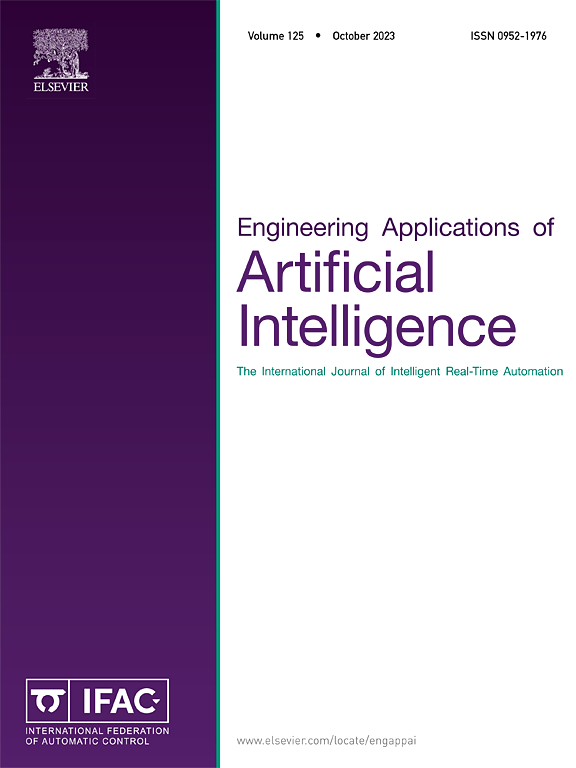Lattice-based sensor data acquisition strategy to solve sensor position drift in human gait phase recognition system with a single inertia measurement unit
IF 7.5
2区 计算机科学
Q1 AUTOMATION & CONTROL SYSTEMS
Engineering Applications of Artificial Intelligence
Pub Date : 2025-02-21
DOI:10.1016/j.engappai.2025.110286
引用次数: 0
Abstract
The inertia measurement unit (IMU) sensor units have garnered considerable utilization in gait phase recognition systems owing to their inherent data stability and compatibility with low-usage conditions. The extant scholarship concerning gait phase recognition predicated upon IMU sensors manifests a concentrated endeavor to augment the accuracy of recognition through the employment of diverse recognition algorithms and the fusion of multiple sensors. However, the impact of the drift of the IMU sensor position on the accuracy of the gait phase recognition algorithm during training and use is ignored, which is especially important for a single IMU gait recognition system. Therefore, taking convolutional neural network, deep neural network, support vector machine, and random forest algorithms as examples, this paper studies the impact of IMU sensor position drift on the accuracy of gait phase recognition algorithms. To address the quandary of position drift, this study proposes an innovative lattice-based data acquisition strategy for a single IMU sensor by selecting 9 uniformly distributed points on the posterior region of the calf. A treadmill walking test wearing an embedded IMU data acquisition system was organized to verify the practical performance of the lattice-based data acquisition strategy. By comparing the performance of different lattice combinations, a 5-point sensor acquisition strategy is proposed, which can effectively increase the accuracy of gait phase recognition with IMU sensor position drift by more than 10.29%.
求助全文
约1分钟内获得全文
求助全文
来源期刊

Engineering Applications of Artificial Intelligence
工程技术-工程:电子与电气
CiteScore
9.60
自引率
10.00%
发文量
505
审稿时长
68 days
期刊介绍:
Artificial Intelligence (AI) is pivotal in driving the fourth industrial revolution, witnessing remarkable advancements across various machine learning methodologies. AI techniques have become indispensable tools for practicing engineers, enabling them to tackle previously insurmountable challenges. Engineering Applications of Artificial Intelligence serves as a global platform for the swift dissemination of research elucidating the practical application of AI methods across all engineering disciplines. Submitted papers are expected to present novel aspects of AI utilized in real-world engineering applications, validated using publicly available datasets to ensure the replicability of research outcomes. Join us in exploring the transformative potential of AI in engineering.
 求助内容:
求助内容: 应助结果提醒方式:
应助结果提醒方式:


